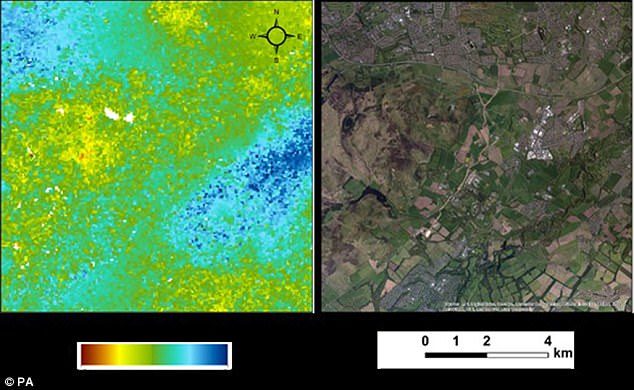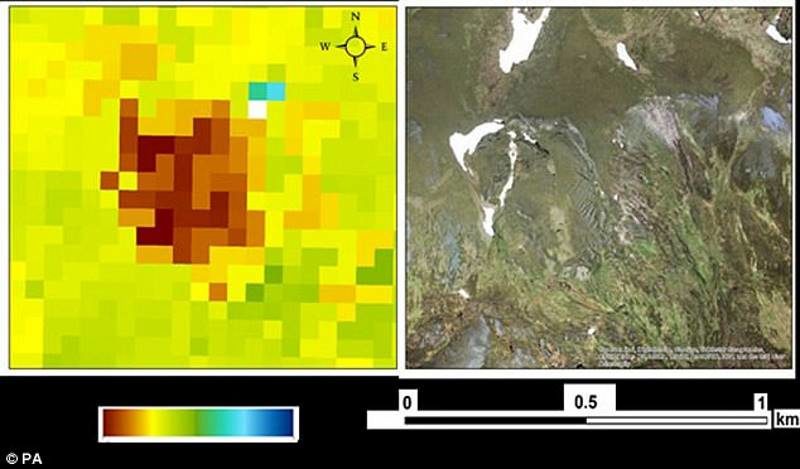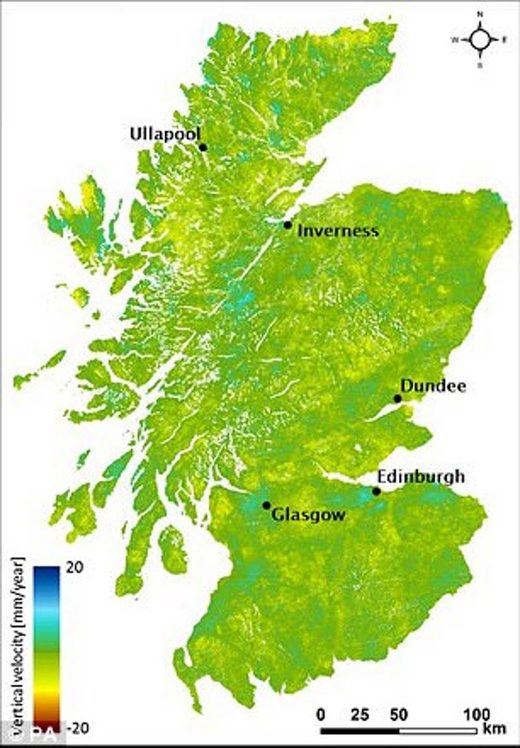
Created using hundreds of satellite radar images of the country, the map covers movement over a two-year period from 2015 to 2017.
It shows that small but significant rates of land motion are occurring across almost the entire landscape of Scotland, especially in old mining areas, which could even result in minor earthquakes.
'There are many things that cause the land to move - some are natural and some are man-made', Dr Andy Sowter, chief technology officer of Geomatic Ventures Limited, the company that processed the images, told MailOnline.
'In places like the Scottish midlands they were coal mining for 150 years and that deep coal mining has caused the land to move in a number of ways', Dr Sowter said.
As well as being caused by historical coal mining, this movement is also influenced by subsidence over peat-lands and landslides on steep slopes.
Dr Sowter said there are many reasons why we should be worried about this land motion.
How did they do it?
Scientists from the University of Nottingham created the map using Intermittent Small Baseline analysis, a satellite remote sensing technique.
The map was produced from radar data (627 images) acquired over two years by the Sentinel-1 satellite mission, which is part of the European Union's Copernicus programme.
Sentinel-1 data was downloaded for free from the European Space Agency website which is collecting data every six days and can measure down to the nearest centimetre. This technique has been used for a long time in urban areas but was difficult to apply in rural areas as the land changes shape through the seasons.
Now experts from Geomatic Ventures Limited have managed to filter through these variables and get clear readings of rural subsidence.
Subsidence is shown on the map by red and yellow colours, with green representing stable ground across the majority of the country.
The team said such maps could inform regulations around fracking and oil and gas production.
'In many areas across the UK these mining areas are collapsing and uplifting which causes minor earthquakes and tremors', he said.
'If these areas are already uplifting and subsiding and causing tremors and you're going to go into that area and start fracking you ought to know about that.
'From a fracking company point of view, you want to be damn sure you're not blamed for it', he said.
Scientists from the University of Nottingham created the map using Intermittent Small Baseline analysis, a satellite remote sensing technique.
The map was produced from radar data (627 images) acquired over two years by the Sentinel-1 satellite mission, which is part of the European Union's Copernicus programme.
Sentinel-1 data was downloaded for free from the European Space Agency website which is collecting data every six days and can measure down to the nearest centimetre.
This technique has been used for a long time in urban areas but was difficult to apply in rural areas as the land changes shape through the seasons.


The team said such maps could inform regulations around fracking and oil and gas production.
Project leader Dr Stephen Grebby said: 'Tracking ground motion is also important for a wide range of other applications such as monitoring infrastructure, and this is not just limited to Scotland.
'For example, our wide-area monitoring technique could be used to help identify and monitor ground instability issues along the whole stretch of the proposed HS2 route.
'This would provide information that could ultimately influence the plans for the final route for Phase 2 of HS2, or at least highlight existing ground instability issues that may need to be addressed during construction of the network.'
The map team said vast lowland and highland peatland areas have shown subsidence, thought to be link to the levels of carbon stored in soils.
Dr Sowter said: 'If Scotland is to reach its climate change targets, which are currently under scrutiny by the UK Committee on Climate Change, land motion maps like this can provide vital evidence on the health of peatlands and with regular monitoring, the beneficial effect of peatland restoration towards improving the carbon balance.'



Reader Comments
to our Newsletter